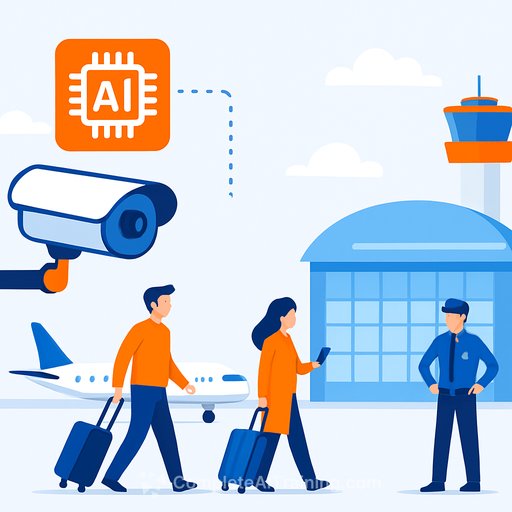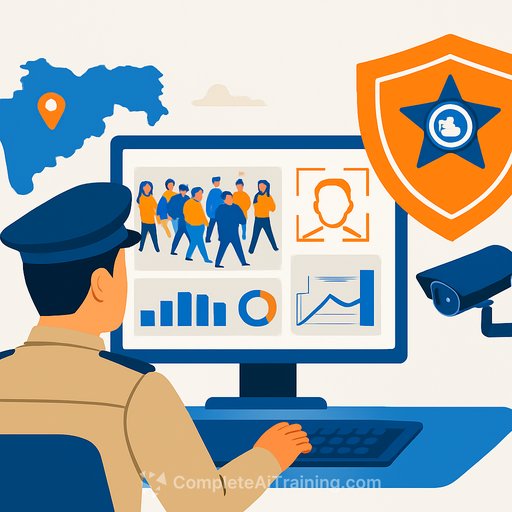How AI-powered surveillance enhances passenger safety and flow
Airports are complex, high-stakes environments. Security teams need to keep people safe without slowing down the operation. With passenger volumes in the hundreds of millions each year, even small inefficiencies ripple into missed flights, overtime costs and unhappy customers. TSA passenger volumes show the scale of the task.
The priority for management is clear: reduce risk and friction at the same time. AI-driven surveillance gives operations leaders a system that detects threats earlier, directs staff faster and keeps queues moving.
Striking the balance: security and ease-of-transit
Long waits at checkpoints drain satisfaction and revenue. Delays multiply when an incident forces re-clearing a terminal or closing a lane. AI helps teams spot issues before they spread, improving throughput and safety in one motion.
By analyzing camera feeds in real-time, AI flags unusual behavior, crowding in the wrong places or attempts to re-enter one-way zones. That turns slow, manual monitoring into targeted action.
Immediate, informed threat responses
With an AI-informed video management system, the right insight reaches the right person at the right time. Alerts route to radios or secure mobile devices the moment a risk appears.
- Contraband cues: Items and behaviors that suggest security violations
- Zone exceptions: Movement against flow, backtracking through checkpoints
- Watchlist matches: Banned individuals attempting to access protected areas
- Crowd anomalies: Sudden density spikes that signal a brewing issue
Teams gain seconds to minutes at the start of an incident-often the difference between a brief pause and a full disruption.
Situational awareness at scale
AI handles continuous observation so staff can focus on passengers. Operators no longer scan dozens of feeds hoping to catch a detail. They get context-rich alerts and the nearest camera view in one step.
Facial recognition, where permitted and governed, accelerates search for people of interest across large facilities. Add individuals to site-specific watchlists with strict policy controls, and trigger real-time notifications that coordinate a measured response-preventing overreach and avoiding area-wide shutdowns.
Integrated security and building operations
Security gets stronger when it connects with access control, building systems and the cloud. Link door events to video, and operators can verify incidents remotely, keep restricted zones secure and avoid unnecessary dispatches.
Occupancy analytics reveal traffic patterns by time and location. Use that data to open lanes earlier, adjust layouts, and fine-tune HVAC during peaks and lulls. The result: smoother flow, lower energy spend and less manual workload.
Use cases management can deploy now
- Checkpoint integrity: Auto-detect backflow into one-way zones and trigger local containment
- Unattended baggage: Flag and track handoffs, notify nearest staff with last-seen video
- Runway/airside detection: Identify foreign objects or vehicles where they shouldn't be
- Perimeter awareness: Spot fence-line activity or unusual clustering after hours
- Access assurance: Pair door alarms with instant video for remote verification
KPIs that prove value
- Average queue time and its variance by hour and checkpoint
- Time to detect, confirm and resolve incidents
- False alarm rate and operator acknowledgment time
- Re-clear events avoided after attempted breaches
- Unattended-bag time-to-intervention
- Staff hours shifted from passive monitoring to passenger support
- Energy savings from occupancy-based HVAC adjustments
- CSAT/NPS for security touchpoints
Implementation playbook
- Define the top five use cases with clear success criteria and baselines
- Integrate VMS, access control and communications for closed-loop alerts
- Right-size compute: mix edge analytics at cameras with centralized processing
- Policy and privacy: signage, retention limits, access controls and audit trails for watchlists and biometrics
- Train teams on new SOPs, escalation paths and mobile workflows
- Pilot in one checkpoint and one concourse; iterate before scaling
- Vendor standards: open APIs, on-prem/cloud flexibility, security certifications and clear model update practices
Governance and trust
AI brings speed, but governance sustains trust. Limit who can create or edit watchlists. Log every alert, match and action for audits. Set retention windows that meet regulations and operational needs, not convenience.
Regularly review false positives and tune models with real incident feedback. The goal is precision-fast alerts that reduce disruption, not background noise that teams learn to ignore.
What leaders should do next
- Run a two-week study on queue times and breach incidents to set targets
- Select one high-impact use case and launch a 90-day pilot with a clear ROI model
- Build a cross-functional cadence: security, operations, facilities and IT reviewing one shared dashboard
AI-powered surveillance is a practical step toward safer terminals and smoother flow. It shortens response times, contains incidents and keeps passengers moving-while giving management the data to run a tighter operation.
For broader team upskilling on AI strategy and operations, explore focused programs by job role at Complete AI Training.
Further reading: TSA press releases for recent screening and enforcement updates.
Your membership also unlocks:






